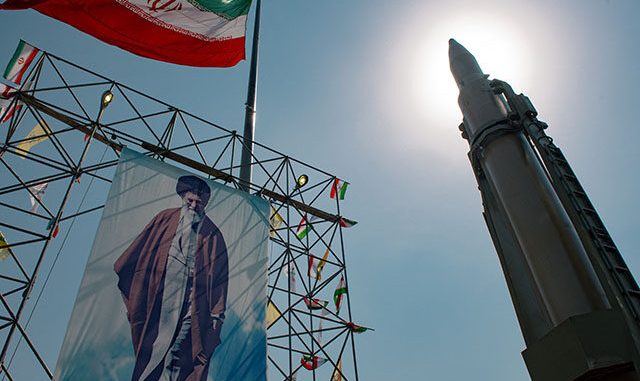
| Published May 6, 2025
Iran unveiled a new solid-fueled ballistic missile named “Qassem Basir,” intensifying tensions with the United States and Israel. Defense Minister Gen. Aziz Nasirzadeh announced that Iran would retaliate against any military aggression from the U.S. or Israel by targeting their interests and bases globally. The missile, boasting a range of 1,200 kilometers (approximately 745 miles), features advanced guidance and maneuverability, enabling it to evade anti-ballistic defense systems like THAAD and Patriot.
Nasirzadeh added: “We have no hostility toward neighboring countries and seek brotherly relations, but in the event of an attack, US bases in the region will be considered legitimate targets.”
Iran regularly threatens to annihilate Israel and flatten its cities.
The missile’s unveiling follows a recent incident where Yemen’s Houthi militia, reportedly backed by Iran, launched a missile that landed near Israel’s Ben Gurion Airport, escalating regional tensions. In response, Israeli Prime Minister Benjamin Netanyahu attributed the attack to Iran and promised a response not only against the Houthis but also directly against Iran.
Amid these developments, indirect talks between Iran and the U.S. regarding Iran’s nuclear program have been postponed. President Donald Trump has reiterated warnings of potential airstrikes on Iran’s nuclear facilities, while Iran has hinted at the possibility of advancing toward weaponizing its uranium stockpile if diplomacy fails.
SOURCES: BREITBART – Iran Threatens U.S. Bases ‘Wherever They Are’ as New Ballistic Missile Revealed
THE TIMES OF ISRAEL – Iran unveils new solid-fueled ballistic missile with 1,200-km range
IRAN INTERNTIONAL – Iran threatens to hit US bases after unveiling new ballistic missile
REUTERS – Iran says it will strike back if US or Israel attack
AP NEWS – Iran unveils new solid-fueled ballistic missile, state TV reports





Be the first to comment